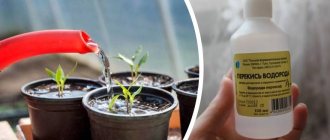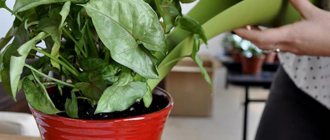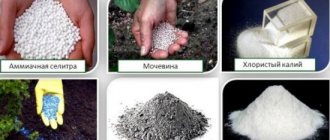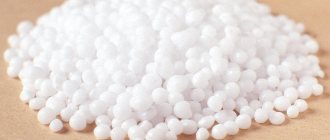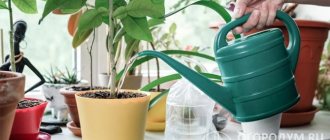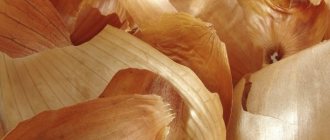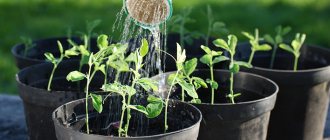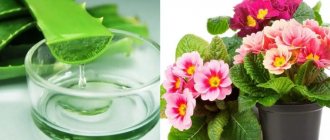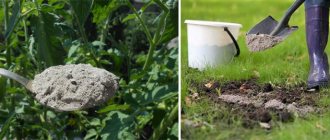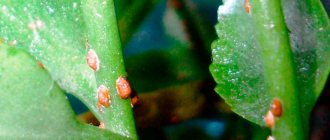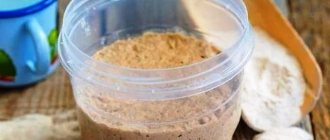Ash is considered a universal substance suitable for fertilizing plants in open ground and in home growing conditions. How and when to fertilize with ash is largely determined by the conditions created by a particular crop. Houseplants are grown in an artificially created environment, so the use of ash as a fertilizer has some peculiarities.
Composition and beneficial properties of ash
Wood ash for indoor flowers is one of the most popular fertilizers. It contains the nutrients they need, such as phosphorus and potassium. In addition, ash reduces the acidity of the soil, so it should be used with caution for houseplants that prefer acidic soil. But for those crops that require neutral or alkaline soil for abundant growth and flowering, fertilizing with ash will be useful.
Ash contains more than 30 microelements necessary for home ornamental plants. It contains:
- potassium, which stimulates plant immunity;
- magnesium, necessary for photosynthesis;
- phosphorus, which promotes long flowering;
- molybdenum, calcium, boron, manganese, zinc and many other trace elements.
It is thanks to this rich chemical composition that ash fertilizers are beneficial for the soil. For example they:
- make the soil permeable to oxygen and water;
- destroy pathogenic microorganisms in the soil;
- prolongs the flowering of plants and increases the number of flower stalks;
- reduce soil acidity;
- actively promote the development of nitrogen-fixing bacteria in the soil;
- increase plant resistance to unfavorable conditions;
- remove harmful impurities and excess water from the soil.
Feeding indoor flowers with ash is necessary for abundant flowering. Thanks to ash fertilizers, ornamental crops become brighter, more buds are formed and flowering lasts longer, so house plants become more attractive and healthy.
The effect of using ash directly depends on the wood from which it is obtained. The best ash is considered to be birch and pine. It contains a lot of calcium. But the champion in terms of its content is the ash obtained by burning oak wood. There is a lot of phosphorus in buckwheat ash, and wheat ash contains 18% potassium and 9% phosphorus. Ash from peat is enriched with calcium oxide, and burnt grass contains a large amount of potassium. The product obtained from burning the stems and leaves of ferns and sunflowers contains a lot of phosphorus and potassium. The disadvantage of ash is the lack of nitrogen, which evaporates when grass or wood is burned.
IMPORTANT! Deciduous ash contains a large amount of calcium, while coniferous ash contains a lot of phosphorus. More potassium is obtained by burning young branches and trunks.
Proper feeding with wood ash
To prevent plants from starving, but also to avoid an excess of substances, the correct proportions must be observed when mixing fertilizers of organic and mineral origin:
- allowed to be mixed with compost, humus or peat;
- when combined with superphosphate, the ash portion should not exceed 8% of the total amount of phosphate fertilizers;
- It is preferable to use sulfuric acid substances when mixing fertilizers.
It has been noticed that a combination of ashes and dry tea leaves containing potassium has a good effect. Before planting in the soil, they are mixed in a 1:1 ratio.
How to get ash for plants
Ash for flowers is obtained from any natural material that supports combustion. The product used is the product generated from burning wood in stoves or fireplaces, as well as on an open fire. The main thing is not to throw glossy magazines, plastic, glass, rubber and other household waste into the fire. Only branches and trunks of deciduous and coniferous trees, straw, grass, leaves of bushes and trees are used. Therefore, it is highly not recommended to collect ashes at other people’s picnic sites. Combustion products can be toxic to house plants and humans. You should especially not use rust-colored ash as a fertilizer, which contains a lot of iron, which can harm plants, since iron interferes with the absorption of phosphorus.
Methods of application
(adsbygoogle = window.adsbygoogle || []).push({});
You can fertilize plants with ash in its dry form and make infusions or decoctions for watering. Dry fertilizer is applied when transplanting indoor and garden flowers into the soil or later, sprinkling it on the ground, mixing with the top layer. When replanting indoor flowers in spring, add ash to the ground at the rate of 2 tablespoons per 1 kg of prepared soil, mix everything thoroughly, plant the flower in a pot and water the soil. Fuchsias, geraniums, cyclamens and other flowers respond well to such enrichment of the earth.
For indoor flowers, fertilizers are prepared in the proportion of three level tablespoons of ash per 1 liter of water. The infusion should be kept for a week, shaking the container every day - this will help the particles dissolve evenly. The infusion can be used together with organic fertilizers that do not contain ammonia. For a liter pot, 100 mg of liquid will be enough.
For garden crops, the solution ratio will be the same, but you need to water the ground with a large amount of fertilizer.
Ash decoction is prepared from 20 grams of ash, poured with 2 glasses of water. The mixture is boiled for half an hour and filtered, and then diluted in two liters of water. It is better not to exceed the concentration, since boiled ash is caustic soda or alkali, which can not only help, but also harm. Decoctions are often prepared for spraying, as foliar feeding or as a means of pest control. You can add half or a third of a piece of laundry or green soap to the product for better adhesion when processing the leaves.
Dry ash is added at the rate of 2-4 kg per 10 square meters. It is better to do this in calm weather so that the wind does not carry away light particles. If the fertilizer is scattered on the ground, you can sprinkle it with water to prevent it from scattering, or dig it up with the top layer of soil.
It is better to fertilize in the spring rather than in the fall, when rains can wash away all the nutrients.
Adding ash to the soil
When working with ash, be sure to follow safety precautions: protect your eyes and respiratory tract from dust - although it is safe for health, it is better not to cause irritation. If dust gets into your eyes, nose or mouth, wash them with plenty of water. Put gloves on your hands before work - the ash dries the skin very much.
In order not to make a mistake in the proportions and not to do everything “by eye”, you need to know that 5-6 g of ash is placed in a tablespoon, 100 g in a 250 ml glass, and half a kilogram in a liter container.
What plants can be fed with ash?
Wood ash is used as fertilizer for indoor plants if they are deficient in minerals. These flowers and ornamental shrubs develop poorly, are stunted, and have signs of disease.
The need to fertilize with wood ash can be determined by the appearance of the plant:
- deformed leaf blades, painted white, crumbling buds and flowers indicate a lack of calcium;
- lack of aroma of flowers, drying out of the edges of leaves indicates a lack of potassium.
Feeding home flowers with ash is useful for plants that prefer alkaline or slightly acidic soil. Roses, peonies, pelargoniums, clematis, and lilies respond well to it. But ash is not suitable for anthurium, azalea and calla lilies, since these representatives of the plant world prefer acidic soils.
The benefits of ash for home flowers
It turns out that grass and wood ash contain minerals that are very useful for green spaces - phosphorus salts, potassium, calcium and magnesium. The listed macroelements are in forms that are easily absorbed by the roots of seedlings.
In addition, the ashes are saturated with unique microelements, including copper, iron, boron, zinc, manganese, cobalt, the deficiency of which in the soil impairs the decorative properties of indoor beautifully flowering flowers and foliage plants.
According to experienced gardeners, systematically watering plants with ash infusion stimulates the formation of numerous flower stalks, prolongs flowering, and also gives the leaves a juicy color and a healthy, elastic appearance.
How to add ash to indoor plants
They feed houseplants with ash, making an aqueous solution from it, using it in dry form at the root, or spraying it on damaged foliage. To prepare a solution, take 50 g of ash per 1 liter of water. It is poured into a glass container, poured with boiling water and left to infuse for 3 days. This is necessary so that all the beneficial substances contained in the ash are completely dissolved in the liquid. The resulting infusion is watered at the roots of indoor plants. For one watering, large flowers require 1.5–3 liters of fertilizer, small plants - 0.5 liters.
In dry form, fertilizing with ash for indoor plants is used closer to winter or after flowering. The ashes are sifted, freeing them from unnecessary impurities, and scattered over the surface of the soil. Then the soil is loosened and moistened abundantly. Dry ash not only enriches the soil with useful microelements, but also effectively works against root rot.
To repel aphids, spider mites and other pests, dust with ash. The flowers are first sprayed with water, and then the leaves, stems and ground part of the plant are sprinkled with sifted ash.
Ash from pests - helps or not
Sometimes gardeners use ash to repel and destroy slugs and aphids . If there is a ring of ash around the flower, snails and slugs are unlikely to want to “storm” it. This method works especially well in greenhouses and indoor gardens, where fly ash is not carried by the wind.
It is better to store ash in a dry and dark place - this way it will retain more useful substances
House flowers are usually protected from aphids and small fleas. To do this, plants are dusted with ash or the leaves are wiped with an ash-soap decoction (4 tablespoons of ash + 2 cups of water + 1/3 of a piece of laundry soap diluted in 2 liters of water) or sprayed with it. It is best to carry out the treatment in the evening or on a cool cloudy day.
After the procedure, the flowers should not be kept in direct sunlight and should not be sprayed with water for the next 3-5 days. Repeated treatment is carried out no earlier than two weeks later.
Compatibility with other fertilizers
Ash for indoor plants can be used as an additive to complex fertilizers. But you should not apply it simultaneously with nitrogenous fertilizing or if 15–30 days have not passed after their use, otherwise there will be no benefit from fertilizing. Nitrogen neutralizes the potassium-phosphorus base of ash fertilizers.
Ash can be combined with peat, compost, and humus. Mix it with potassium and sodium nitrate. Add herbal infusions of mullein to the finished fermentation. But you can’t mix it with fresh manure, because it contains a lot of ammonia.
Residues from burnt plants, shrubs and trees are an excellent and, most importantly, inexpensive fertilizer for house plants. Thanks to it, the earth literally comes to life, becomes loose, light and enriched with useful substances. Indoor flowers respond well to such fertilizing with abundant and long flowering.
What substances cannot be used with ash fertilizers at the same time?
Ash for indoor plants can bring not only benefits, but also harm. It happens this way:
- If you simultaneously add urea, ammonium nitrate and ash to the soil. The effects of these substances are mutually opposite. It is better to apply urea later a week by foliar application, and the ash solution to the soil, or wait 3 weeks between fertilizing.
- If you add ash, bone meal or dolomite meal to acid-neutral soil. Leaves on such soil will turn white from excess calcium, because these substances contain it in large quantities.
- A change in color from gray to rusty or brown indicates that it contains a lot of iron oxides and cannot be used for indoor crops, since phosphorus will be poorly absorbed and fertilizing will become useless.
Purchased ashes have instructions on the back of the package, so before use it is important to familiarize yourself with the composition of the substance so as not to overdo it with fertilizer and not urgently save the flowers by changing the soil.
On what soils is ash used and on what soils is it prohibited?
Ash will be an ideal fertilizer for the following type of soil:
- Low calcium soil.
- Soil with a high level of acidity (pH - less than 5.5), since the use of ash increases the acidity level.
Ash can increase the acidity of the soil so much that the ability of plants to absorb nutrients will decrease and the plantings will wither and die.
Preparing the mother liquor
For ease of use, experienced summer residents first prepare a mother infusion. How to infuse ash:
- 2 liter jars of sifted ash are poured into a bucket and the powder is poured with 8 liters of clean lukewarm water.
- How long to infuse the ash? – 2-3 days, periodically stirring with a wooden stick, then pour into another container, leaving the sediment in the bucket. It can be added to the compost bin.
An ash solution is prepared even faster by stirring 1 cup of ash in 8 liters of lukewarm water. The concentration of useful substances in such a solution will be several times lower.
Concentration of ash infusion for fertilizing and against pests
| Recommended fertilizing concentrations: | |
| for root feeding of leafy greens, vegetables, flowers, trees, indoor plants and shrubs | the concentrate is diluted with water 1:5 |
| for processing plantings using tops and leaves | The mother solution is diluted 1:10 |
Plants are watered with ash infusion at intervals of 12-14 days throughout the summer season.
Irrigation of the above-ground parts of plants infested with parasites is carried out using a spray bottle. Ash-soap infusion against pests is used after dilution 1:4 and dissolving 50 g of laundry, tar or sulfur soap in it for every 10 liters of biological insecticide. The frequency of treatments is from 3 to 6 times with an interval of several days, depending on the reaction of dangerous insects to spraying.
Ash effectively repels aphids, cabbage moths, cruciferous flea beetles, and codling moths. Use sifted ash powder, generously dusting the leaves with it.
From aphids
An infusion of wood ash is used against aphids:
- Pour 300 g of ash into a liter of boiling water.
- Keep in a water bath for 20 minutes.
- Cool, strain and bring the volume to 10 liters.
- Add 1 tbsp to a bucket of solution. a spoonful of liquid soap for better adhesion of the composition to the leaves.
Video recommendations for using aphid ash:
;
To repel slugs and snails, sprinkle the soil around the plants with a mixture of wood ash and lime.
Recipes for using ash solution
There are different concentrations of solution or infusion of ash for use in various situations: feeding vegetables, flowers, treating pests.
Top dressing from nettles and ash
Fresh nettle is often used to make “green manure”. This infusion of fresh nettle grass and other weeds (shepherd's purse, tansy) is prepared for 5-7 days, adding the Baikal preparation or a little yeast (fresh bread or crackers) to speed up fermentation.
To increase the effect of fertilizing, add ash to the container with grass, about 200 g per 15 liters.
Before use, the finished infusion is diluted 7 times with clean water. It is used to feed all vegetable crops, except garlic, onions, and legumes.
Video: recommendations for preparing ash infusion for fertilizing and treatments
I wish you good harvests and easy work in your summer cottage!
- Author: Maria Sukhorukikh
Rate this article:
- 5
- 4
- 3
- 2
- 1
(0 votes, average: 0 out of 5)
Share with your friends!
Ash for the garden
Our ancestors also noticed that stronger greenery grows in places where there were fires. Therefore, in their plantings and vegetable gardens, they began to use the remains from fires and bonfires. The results were immediate. It is important that the ash from burning wood fuel is practically harmless to humans, and its effect is obvious.
Now its benefits have been proven by scientific institutes. It no longer surprises anyone that vegetables in the garden with ash are much greater in weight, taste and quantity than those grown without ash fertilizer.
Gardeners should also know the doses that need to be observed when adding:
- when planting and planting, no more than one and a half tablespoons (10 g) of ash should be added to the holes;
- When cultivating the soil in the spring and during autumn digging, you need to fertilize the soil at the rate of 1 cup (200 g) of the substance per square meter. meter;
- Watering is carried out with ash infusion, 1 half-liter jar for each seedling.
